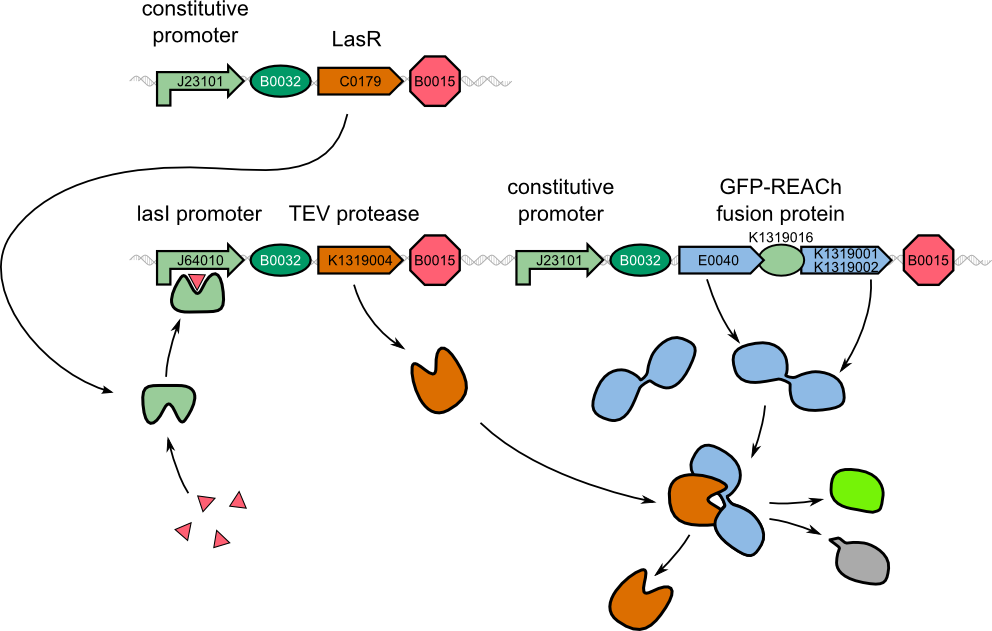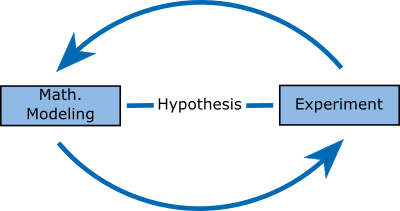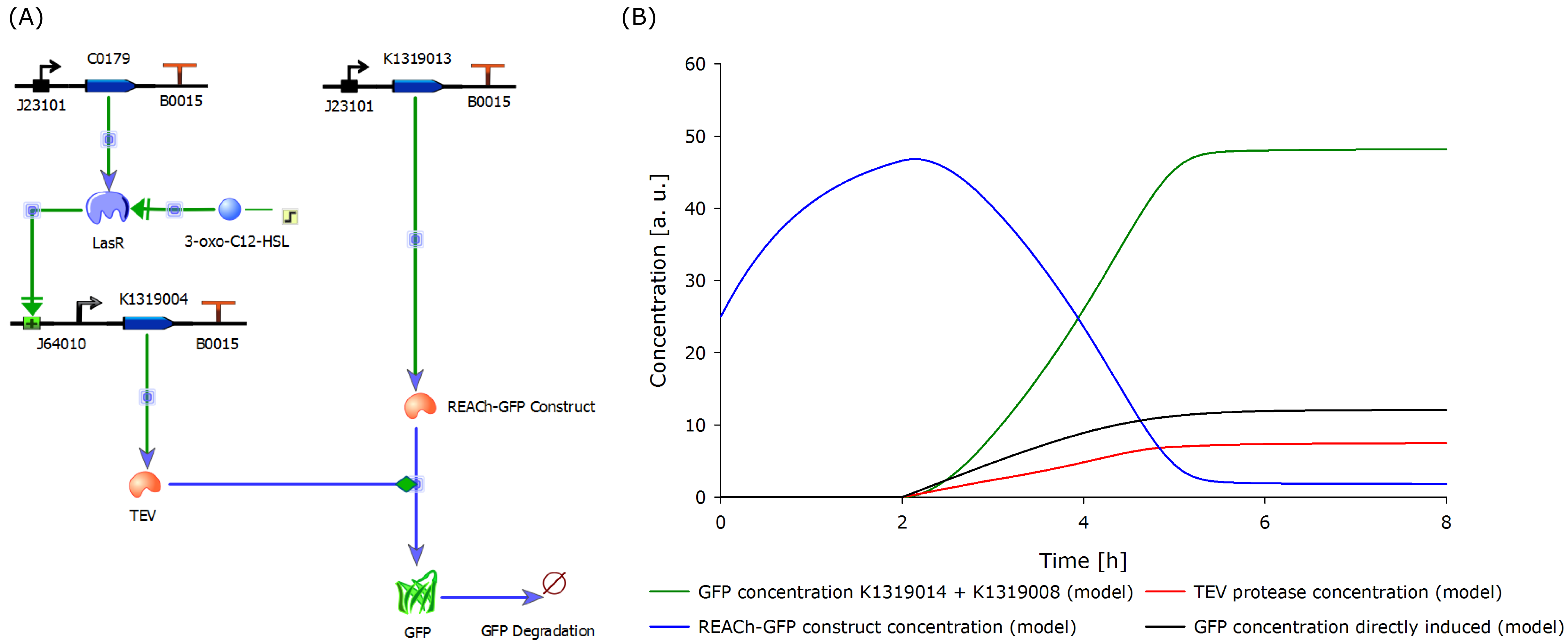Team:Aachen/Project/Model
From 2014.igem.org
(→Modeling) |
(→Modeling) |
||
| Line 6: | Line 6: | ||
=Modeling= | =Modeling= | ||
<center> | <center> | ||
| - | {{Team:Aachen/FigureFloat|Aachen 14-10-16 REACh approach iFG.png|align=center|title= | + | {{Team:Aachen/FigureFloat|Aachen 14-10-16 REACh approach iFG.png|align=center|title=Molecular approach|subtitle=Expression of the TEV protease is induced by 3-oxo-C<sub>12</sub>-HSL. The protease cleaves the GFP-REACh fusion protein to elicit a fluorescence response.|width=630px}} |
</center> | </center> | ||
| Line 15: | Line 15: | ||
For our two-dimensional biosensor, we thought of different methods to generate a faster and stronger fluorescent response from weak promoters. In our molecular approach (left) to detect ''P. aeruginosa'', a fusion protein of GFP and the dark quencher is cleaved by the very specific TEV protease which is introduced behind the weak quorum sensing promoter. | For our two-dimensional biosensor, we thought of different methods to generate a faster and stronger fluorescent response from weak promoters. In our molecular approach (left) to detect ''P. aeruginosa'', a fusion protein of GFP and the dark quencher is cleaved by the very specific TEV protease which is introduced behind the weak quorum sensing promoter. | ||
| - | To validate our hypothesis, we developed a model of | + | To validate our hypothesis, we developed a model of our molecular approach using the CAD tool TinkerCell (Chandran, Bergmann and Sauro, 2009). |
To compare the response time of the fluorescence signal between our theoretical system and a traditional biosensor, we included a direct expression of GFP in the same plot (below). In the results shown below, the strength of the promoter used for the direct GFP expression (traditional approach) is even twice as high as the strength of the promoter upstream of the TEV coding sequence in our new approach. Despite the weaker promoter, a '''higher GFP concentration is generated in the model of the novel biosensor''', predicting a quicker response time of our system. | To compare the response time of the fluorescence signal between our theoretical system and a traditional biosensor, we included a direct expression of GFP in the same plot (below). In the results shown below, the strength of the promoter used for the direct GFP expression (traditional approach) is even twice as high as the strength of the promoter upstream of the TEV coding sequence in our new approach. Despite the weaker promoter, a '''higher GFP concentration is generated in the model of the novel biosensor''', predicting a quicker response time of our system. | ||
| Line 21: | Line 21: | ||
<center> | <center> | ||
| - | {{Team:Aachen/Figure|Aachen_Model_merged.png|align=center|title=Model of | + | {{Team:Aachen/Figure|Aachen_Model_merged.png|align=center|title=Model of our molecular approach in TinkerCell (a) and the output over time (b)|subtitle=The molecular setup of the novel biosensor (left) yields results indicating a strong and fast fluorescence output after induction (right). A directly inducible system was modeled and added to the plot for comparison.|width=1000px}} |
</center> | </center> | ||
Revision as of 23:50, 17 October 2014
|
|
 "
"



